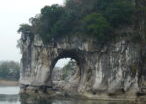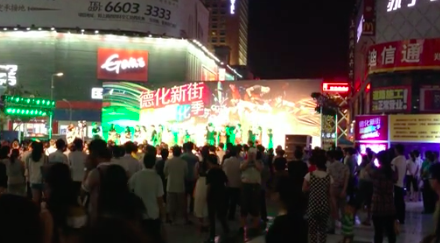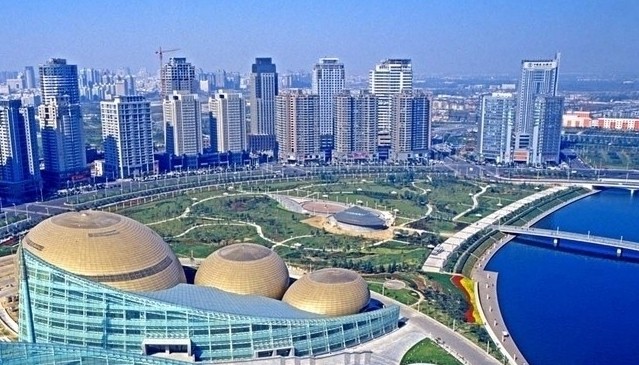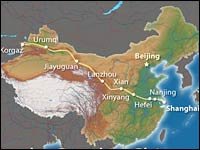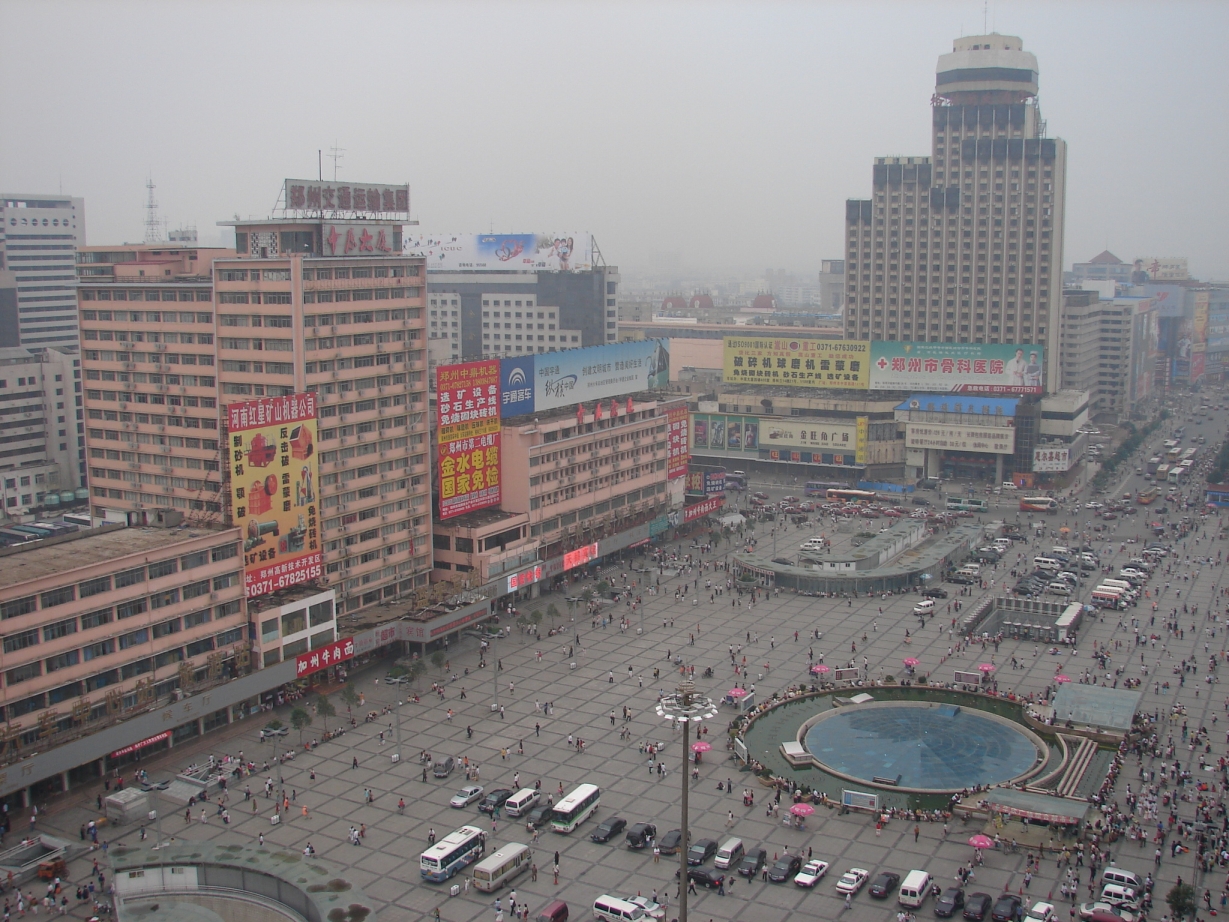While searching for new experiences abroad, spontaneity usually trumps planning.
Pat and I were scheduled to spend the morning in Yangshuo before heading back to Guilin to catch a late-afternoon flight to Chengdu, home of a renowned panda-breeding center. At the last minute, however, we decided to return to Guilin early so we could check out two sites we missed the first time around – Elephant Trunk Hill and Reed Flute Cave.
It turned out to be a smart move because they’re both unforgettable.
Elephant Trunk Hill, which like most places around here gets its name from its shape, is located in a scenic park. At the bottom of the hill is a cave that has ancient writing on the wall describing the area’s natural beauty. Our guide Johnny told us groups of elderly women come to the cave in the morning to sing because of its clear acoustics.
It was raining, so the granite steps were slippery as we climbed the 180-foot hill. Pat slipped and fell on her rear end, but bounced back up and kept going to the circular platform at the top, which offers a spectacular view of the city and its surroundings, including two lakeside pagodas named Sun and Moon.
***
There are several legends about the origin of the hill, but they all end with a “magic elephant’’ turning into stone after having a sword thrust into his back. The pagoda that now sits atop the hill supposedly represents the handle of that sword. Personally, I’d rather not spend eternity as a rock holding up a pagoda.
Before heading to Reed Flute Cave, we had lunch and stopped at a bank to change some U.S. money into Chinese yuan. After filling out some forms and giving the teller my passport, I proceeded to wait 25 minutes as she entered loads of information into her computer and hand inspected all my U.S. bills. She turned each bill over several times, held it up the to light and ran her fingers across it. You’d think she was checking to see if the Mona Lisa was fake.
On our way to the airport, we stopped to see the Reed Flute Cave, a prehistoric underground wonder filled with eye-popping limestone stalactites, stalagmites and columns. It gets its name from the verdant reeds growing outside the entrance, which can be used to make flutes.
The 790-foot long cave contains ink inscriptions that date back more than 1,200 years. During World War II, local residents used it as a hiding place to escape the Japanese invaders. The cave was finally opened to the public in 1962 and so many foreign dignitaries have visited it since then, including Presidents Nixon and Carter, that it’s been nicknamed the State Guest Cave.
The rocks come in all shapes and sizes, and they’re lit with rainbow colors that make them look ethereal. Many of the figures resemble animals, plants or various objects, including a famous New York landmark. The list includes a lion, jellyfish, centipede, water buffalo, snowman, chandelier, stage curtain, mushroom, umbrella, ice cream cone and the Statue of Liberty.
***
At one point we stopped to watch a film about the cave’s origin projected on the ceiling. The movie featured dinosaurs, sharks, woolly mammoths and other creatures that fit perfectly with the cave’s primordial atmosphere.
The cave is a major tourist attraction, but’s it’s also occasionally used for social functions by wealthy visitors. Johnny said some Swiss bankers rented it out a few years ago for lunch and a concert. He said Unilever, the multinational consumer products company, also had an outing there.
Let’s hope Donald Trump doesn’t find out about the cave. He’d probably try to build a golf course inside.
